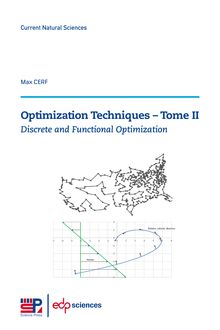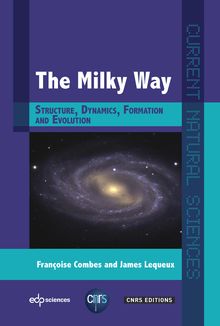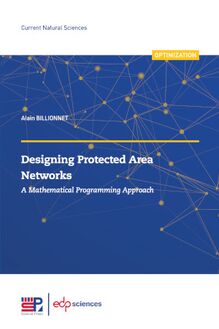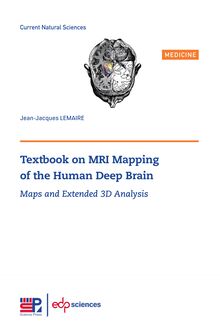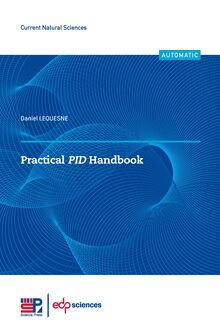-
 Univers
Univers
-
 Ebooks
Ebooks
-
 Livres audio
Livres audio
-
 Presse
Presse
-
 Podcasts
Podcasts
-
 BD
BD
-
 Documents
Documents
-
- Cours
- Révisions
- Ressources pédagogiques
- Sciences de l’éducation
- Manuels scolaires
- Langues
- Travaux de classe
- Annales de BEP
- Etudes supérieures
- Maternelle et primaire
- Fiches de lecture
- Orientation scolaire
- Méthodologie
- Corrigés de devoir
- Annales d’examens et concours
- Annales du bac
- Annales du brevet
- Rapports de stage
La lecture à portée de main
Découvre YouScribe en t'inscrivant gratuitement
Je m'inscrisDécouvre YouScribe en t'inscrivant gratuitement
Je m'inscrisEn savoir plus
En savoir plus

Description
Engineering mechanics provides the theories and methods of describing and predicting the state of equilibrium or accelerated motion of particles or rigid bodies under the action of forces. It consists of three parts: statics (chapters 1–5), kinematics (chapters 6 and 7) and kinetics (chapters 8–10) and it is basically corresponding to the course of “theoretical mechanics” in China. It is hoped that this book will help to develop in engineering students the correct understanding of the principles of mechanics and the ability to analyze and solve engineering problems using the principles. This book can be used as a teaching material for civil engineering, hydraulic engineering, mechanical engineering, aerospace, transportation and other engineering majors in colleges and universities, and as a self-study book for relevant technical personnel.
Foreword................................................... III
CHAPTER 1
Introduction................................................. 1
1.1Mechanics .............................................. 1
1.2Fundamental Concepts and Principles ......................... 2
1.2.1Fundamental Concepts ............................... 2
1.2.2Newton’s Laws of Motion ............................. 3
1.2.3Newton’s Law of Gravitational Attraction ................ 3
1.3 Units of Measurement ..................................... 4
1.4Procedure of Problem Solving ............................... 6
CHAPTER 2
Vectors and Vector Operations ................................... 11
2.1 Vectors and the Parallelogram Law ........................... 11
2.2Cartesian Vectors ........................................ 14
2.2.1Cartesian Vector Representation ....................... 16
2.2.2Addition and Subtraction of Cartesian Vectors............. 19
2.3 Vector Directed Along a Line ............................... 21
2.4 Dot Product and Cross Product ............................. 24
2.4.1Cartesian Vector Formulation of the Dot Product .......... 25
2.4.2Applications of the Dot Product........................ 26
2.4.3Cartesian Vector Formulation of the Cross Product ......... 29
CHAPTER 3
Simplification of Force Systems................................... 37
3.1 Moment of a Force about a Point ............................ 37
3.1.1Vector Formulation ................................. 38
3.1.2Principle of Moments ................................ 43
3.1.3Scalar Formulation .................................. 43
3.2 Momentof a Force about a Specified Axis ..................... 47
3.3 Moment of a Couple ...................................... 52
3.3.1Vector Formulation ................................. 52
3.3.2Scalar Formulation .................................. 54
3.4Simplification of a System of Forces and Couples ................ 58
3.4.1Equivalent System .................................. 58
3.4.2Reduction to One Force and One Couple ................. 59
3.4.3Further Simplification ............................... 63
3.5Application of Simplification of Parallel Forces .................. 70
3.5.1Center of Gravity, Center of Mass, and Centroid of a Body ... 70
3.5.2Center of Gravity, Center of Mass, and Centroid of Composite Bodies........................................... 78
3.5.3Reduction in Distributed Loading ...................... 82
CHAPTER 4
Equilibriumof Rigid Bodies ..................................... 105
4.1Conditions for Rigid-Body Equilibrium ........................ 105
4.2Free-Body Diagrams ...................................... 109
4.2.1Support Reactions .................................. 109
4.2.2Procedure of Drawing a Free-Body Diagram ............... 114
4.3Equilibrium Problems of a Rigid Body ........................ 120
4.4 Two-and Three-Force Members ............................. 127
4.5 Constrains and Statical Determinacy ......................... 129
4.6Equilibrium Problems of Structures........................... 132
4.7 SimpleTrusses .......................................... 142
4.7.1 The Method of Joints................................ 143
4.7.2Zero-Force Members ................................. 148
4.7.3 The Method of Sections .............................. 149
CHAPTER 5
Friction.................................................... 171
5.1Characteristics of Friction .................................. 171
5.1.1 Lawsof Sliding Friction .............................. 172
5.1.2Angles of Friction and Self-Locking ..................... 174
5.2Problems Involving Sliding Friction ........................... 175
5.3 Rolling Resistance ........................................ 182
CHAPTER 6
Kinematics of Particles ......................................... 193
6.1 General Curvilinear Motion................................. 194
6.2Curvilinear Motion: Rectangular Components ................... 196
6.3Curvilinear Motion: Tangential and Normal Components .......... 203
6.3.1 Thet-n-b Coordinate System .......................... 204
6.3.2Velocity .......................................... 205
6.3.3Acceleration ....................................... 205
6.4Absolute Dependent Motion Analysis of Particles ................ 212
6.5Relative-Motion Analysis Using Translating Axes ................ 218
CHAPTER 7
Planar Kinematics of Rigid Bodies ................................ 233
7.1Translation ............................................. 235
7.2Rotation about a Fixed Axis................................ 237
7.2.1Angular Motion .................................... 237
7.2.2Motion of a Particle on a Rotating Body ................. 239
7.3Absolute Dependent Motion Analysis of Bodies.................. 249
7.4 General Plane Motion ..................................... 251
7.4.1Relative-Motion Analysis: Velocity and Acceleration......... 253
7.4.2Instantaneous Center of Rotation ....................... 265
CHAPTER 8
Kinetics:Equations of Motion.................................... 289
8.1Newton’s Second Law of Motion ............................. 289
8.2Equation of Motion for a Particle ............................ 290
8.3Equation of Motion for a System of Particles ................... 303
8.4 MassMoment of Inertia ................................... 305
8.4.1Parallel-Axis Theorem and Radius of Gyration ............. 309
8.4.2 Mass Moment of Inertia of Composite Bodies .............. 311
8.5 Planar Kinetic Equations of Motion .......................... 314
8.5.1Equations of Motion for Translation ..................... 319
8.5.2Equations of Motion for Rotation about a Fixed Axis ....... 324
8.5.3Equations of Motion for General Plane Motion ............. 329
CHAPTER 9
Kinetics:Work and Energy ...................................... 351
9.1 Workand Power ......................................... 351
9.1.1 Work............................................ 351
9.1.2 Power........................................... 362
9.2 Kinetic Energy .......................................... 364
9.2.1Kinetic Energy of a Particle ........................... 364
9.2.2Kinetic Energy of a System of Particles .................. 365
9.2.3Kinetic Energy of a Rigid Body in Planar Motion .......... 366
9.3Principle of Work and Energy ............................... 370
9.3.1Principle of Work and Energy for a Particle ............... 370
9.3.2Principle of Work and Energy for a System of Particles ...... 375
9.4Conservative Forces and Conservation of Energy ................. 385
9.4.1Conservative Forces ................................. 385
9.4.2Potential Energy ................................... 387
9.4.3Principle of Conservation of Energy ..................... 388
CHAPTER 10
Kinetics:Impulse and Momentum ................................. 409
10.1Principle of Linear Impulse and Momentum for a Particle ......... 409
10.1.1Linear Momentum and Linear Impulse ................. 409
10.1.2Principle of Linear Impulse and Momentum ............. 411
10.2Principle of Angular Impulse and Momentum for a Particle ........ 417
10.2.1Angular Momentum ............................... 417
10.2.2Principle of Angular Impulse and Momentum ............ 418
10.3Principle of Impulse and Momentum for a System of Particles...... 421
10.3.1Linear Momentum of a System of Particles .............. 423
10.3.2Angular Momentum of a System of Particles ............. 423
10.3.3Angular Momentum of Rigid Bodies in Planar Motion ..... 426
10.3.4Principle of Impulse and Momentum for Rigid Bodies in Planar Motion ..........430
10.4Principle of Conservation of Momentum ...................... 441
Answers.................................................... 455
References.................................................. 465
Sujets
Informations
| Publié par | EDP Sciences |
| Date de parution | 23 décembre 2022 |
| Nombre de lectures | 0 |
| EAN13 | 9782759829026 |
| Langue | English |
| Poids de l'ouvrage | 42 Mo |
Informations légales : prix de location à la page 1,9200€. Cette information est donnée uniquement à titre indicatif conformément à la législation en vigueur.
Extrait
Current Natural Sciences
Ping YI, Jun LIU and Feng JIANG
Engineering Mechanics
M E C H A N I C S
M E C H A N I C S
ISBN : 978-2-7598-2901-9
Current Natural Sciences
Engineering Mechanics
Ping YI, Jun LIU and Feng JIANG
Engineering mechanics provides the theories and methods of
describing and predicting the state of equilibrium or
accelerated motion of particles or rigid bodies under the action
of forces. It consists of three parts: statics (chapters 1–5),
kinematics (chapters 6 and 7) and kinetics (chapters 8–10)
and it is basically corresponding to the course of “theoretical
mechanics” in China. It is hoped that this book will help to develop
in engineering students the correct understanding of the principles
of mechanics and the ability to analyze and solve engineering
problems using the principles.
This book can be used as a teaching material for civil engineering,
hydraulic engineering, mechanical engineering, aerospace,
transportation and other engineering majors in colleges and
universities, and as a self-study book for relevant technical
personnel.
www.edpsciences.org
Current Natural Sciences
Ping YI, Jun LIU and Feng JIANG
Engineering Mechanics
Printed in France
EDP Sciences–ISBN(print): 978-2-7598-2901-9–ISBN(ebook): 978-2-7598-2902-6
DOI: 10.1051/978-2-7598-2901-9
All rights relative to translation, adaptation and reproduction by any means whatsoever
are reserved, worldwide. In accordance with the terms of paragraphs 2 and 3 of Article 41
of the French Act dated March 11, 1957,“copies or reproductions reserved strictly for
private use and not intended for collective use”and, on the other hand, analyses and
short quotations for example or illustrative purposes, are allowed. Otherwise,“any
representation or reproduction–whether in full or in part–without the consent of the
author or of his successors or assigns, is unlawful”(Article 40, paragraph 1). Any
representation or reproduction, by any means whatsoever, will therefore be deemed an
infringement of copyright punishable under Articles 425 and following of the French
Penal Code.
The printed edition is not for sale in Chinese mainland. Customers in Chinese mainland
please order the print book from Science Press. ISBN of the China edition: Science Press
978-7-03-073762-5
Science Press, EDP Sciences, 2022
Foreword
This book presents and illustrates the concepts, principles and analytical
problem-solving methodologies in engineering mechanics. It is divided into ten
chapters. Chapter1gives an introduction to engineering mechanics and its
fundamental concepts. Since the international system of units (SI units) receives
worldwide recognition, SI units are also introduced in chapter1and used
throughout the book. As a convenient tool, vector algebra is then presented in
chapter2. Chapter3discusses the simplification of a system of forces and couples or
a distributed loading. The conditions and equations of equilibrium for a particle and
a rigid body are developed and applied, especially to equilibrium problems of a
system of rigid bodies, such as frames, machines and trusses, in chapter4.
Applications to equilibrium problems involving frictional forces are discussed in
chapter5. The kinematics of particles is treated in chapter6, followed by a
discussion of planar kinematics of rigid bodies in chapter7. Kinetics are discussed in
chapter8(equations of motion), chapter9(work and energy), and chapter10
(impulse and momentum). In each of these three chapters, applications to only
particles’motion are considered first and then more difficult and practical
applications associated with the motion of rigid bodies are addressed.
Each chapter begins with theobjectives of the chapter. Then it consists of theory
sections, example problems and homework problems. The example problems serve
double purposes of amplifying the theories and demonstrating the neat work that
students should cultivate in their own solutions, and are presented in a logical and
orderly manner. Sometimes multiple solutions are provided for a problem, trying to
inspire students to broaden their thinking and better understand various principles
and methods. For some examples, there is a“RETHINK”section, where in-depth
discussions or enlightening questions are presented. Most of the problems are of
practical nature and should appeal to engineering students. They are meticulously
designed to help students master the principles of mechanics and their applications.
DOI: 10.1051/978-2-7598-2901-9.c901
Science Press, EDP Sciences, 2022
IV
Foreword
This book is financially supported by Dalian University of Technology and
DUT-BSU Joint Institute, which are gratefully acknowledged. During the
preparation of this book, many people have helped in its development. First, the authors are
particularly grateful to Dr. Dzianis Marmysh in Belarusian State University and
Dr. Ming Li in Dalian University of Technology for their specific help. Also, many
thanks to our graduate students who have taken the time to prepare and check the
solutions to some of the homework problems of the book. They are:
Baopei Cai
Xinyue Ma
Xiaoqian Wang
Na Li
Qingkang Wang
Dongchi Xie
Yuhan Zhang
Zhixuan Li
Linlang Feng
Weining Yang
Huiqing Liu
Juncheng Li
Yongke Li
Wenjian Nie
Xinshuai Guo
Yan Xing
Zuo Zhu
Hongzhi Wang
Shaopeng Bai
Chengcheng Fan
The authors also thank the staff at EDP Sciences and Science Press for their
great support anddedication during the preparation of this book.Lastly, the
authors wish to thank many of our colleagues and students for their helpful
comments and suggestions. Since this list is too long, it is hoped that they will
accept this anonymous recognition.
If you have any comments, problems, or suggestions related to the book, please
feel free to contact us. Your feedback will surely help us complement and improve it.
Ping Yi, Jun Liu, Feng Jiang
Dalian University of Technology
June, 2021
Contents
Foreword. . . . . . . . . . . . . . . . . . . . . . . . . . . . . . . . . . . . . . . . . . . . . . . . . . .
CHAPTER 1
Introduction. . . . . . . . . . . . . . . . . . . . . . . . . . . . . . . . . . . . . . . . . . . . . . . . .
1.1 Mechanics. . . . . . . . . . . . . . . . . . . . . . . . . . . . . . . . . . . . . . . . . . . . . .
1.2 FundamentalConcepts and Principles. . . . . . . . . . . . . . . . . . . . . . . . .
1.2.1 FundamentalConcepts. . . . . . . . . . . . . . . . . . . . . . . . . . . . . . .
1.2.2 Newton’s Laws of Motion. . . . . . . . . . . . . . . . . . . . . . . . . . . . .
1.2.3 Newton’s Law of Gravitational Attraction. . . . . . . . . . . . . . . .
1.3 Unitsof Measurement. . . . . . . . . . . . . . . . . . . . . . . . . . . . . . . . . . . . .
1.4 Procedureof Problem Solving. . . . . . . . . . . . . . . . . . . . . . . . . . . . . . .
CHAPTER 2
Vectors and Vector Operations. . . . . . . . . . . . . . . . . . . . . . . . . . . . . . . . . . .
2.1 Vectorsand the Parallelogram Law. . . . . . . . . . . . . . . . . . . . . . . . . . .
2.2 CartesianVectors. . . . . . . . . . . . . . . . . . . . . . . . . . . . . . . . . . . . . . . .
2.2.1 CartesianVector Representation. . . . . . . . . . . . . . . . . . . . . . .
2.2.2 Additionand Subtraction of Cartesian Vectors. . . . . . . . . . . . .
2.3 VectorDirected Along a Line. . . . . . . . . . . . . . . . . . . . . . . . . . . . . . .
2.4 DotProduct and Cross Product. . . . . . . . . . . . . . . . . . . . . . . . . . . . .
2.4.1 CartesianVector Formulation of the Dot Product. . . . . . . . . .
2.4.2 Applicationsof the Dot Product. . . . . . . . . . . . . . . . . . . . . . . .
2.4.3 CartesianVector Formulation of the Cross Product. . . . . . . . .
CHAPTER 3
Simplification of Force Systems. . . . . . . . . . . . . . . . . . . . . . . . . . . . . . . . . . .
3.1 Momentof a Force about a Point. . . . . . . . . . . . . . . . . . . . . . . . . . . .
3.1.1 VectorFormulation. . . . . . . . . . . . . . . . . . . . . . . . . . . . . . . . .
3.1.2 Principleof Moments. . . . . . . . . . . . . . . . . . . . . . . . . . . . . . . .
3.1.3 ScalarFormulation. . . . . . . . . . . . . . . . . . . . . . . . . . . . . . . . . .
3.2 Momentof a Force about a Specified Axis. . . . . . . . . . . . . . . . . . . . .
3.3 Momentof a Couple. . . . . . . . . . . . . . . . . . . . . . . . . . . . . . . . . . . . . .
3.3.1 VectorFormulation. . . . . . . . . . . . . . . . . . . . . . . . . . . . . . . . .
3.3.2 ScalarFormulation. . . . . . . . . . . . . . . . . . . . . . . . . . . . . . . . . .
III
1
1
2
2
3
3
4
6
11
11
14
16
19
21
24
25
26
29
37
37
38
43
43
47
52
52
54
VI
3.4
3.5
Contents
Simplification of a System of Forces and Couples. . . . . . . . . . . . . . . .
3.4.1 EquivalentSystem. . . . . . . . . . . . . . . . . . . . . . . . . . . . . . . . . .
3.4.2 Reductionto One Force and One Couple. . . . . . . . . . . . . . . . .
3.4.3 FurtherSimplification. . . . . . . . . . . . . . . . . . . . . . . . . . . . . . .
Application of Simplification of Parallel Forces. . . . . . . . . . . . . . . . . .
3.5.1 Centerof Gravity, Center of Mass, and Centroid of a Body. . .
3.5.2 Centerof Gravity, Center of Mass, and Centroid of Composite
Bodies. . . . . . . . . . . . . . . . . . . . . . . . . . . . . . . . . . . . . . . . . . .
3.5.3 Reductionin Distributed Loading. . . . . . . . . . . . . . . . . . . . . .
CHAPTER 4
Equilibrium of Rigid Bodies. . . . . . . . . . . . . . . . . . . . . . . . . . . . . . . . . . . . .
4.1 Conditionsfor Rigid-Body Equilibrium. . . . . . . . . . . . . . . . . . . . . . . .
4.2 Free-BodyDiagrams. . . . . . . . . . . . . . . . . . . . . . . . . . . . . . . . . . . . . .
4.2.1 SupportReactions. . . . . . . . . . . . . . . . . . . . . . . . . . . . . . . . . .
4.2.2 Procedureof Drawing a Free-Body Diagram. . . . . . . . . . . . . . .
4.3 EquilibriumProblems of a Rigid Body. . . . . . . . . . . . . . . . . . . . . . . .
4.4 Two-an
-
 Univers
Univers
-
 Ebooks
Ebooks
-
 Livres audio
Livres audio
-
 Presse
Presse
-
 Podcasts
Podcasts
-
 BD
BD
-
 Documents
Documents
-
Jeunesse
-
Littérature
-
Ressources professionnelles
-
Santé et bien-être
-
Savoirs
-
Education
-
Loisirs et hobbies
-
Art, musique et cinéma
-
Actualité et débat de société
-
Jeunesse
-
Littérature
-
Ressources professionnelles
-
Santé et bien-être
-
Savoirs
-
Education
-
Loisirs et hobbies
-
Art, musique et cinéma
-
Actualité et débat de société
-
Actualités
-
Lifestyle
-
Presse jeunesse
-
Presse professionnelle
-
Pratique
-
Presse sportive
-
Presse internationale
-
Culture & Médias
-
Action et Aventures
-
Science-fiction et Fantasy
-
Société
-
Jeunesse
-
Littérature
-
Ressources professionnelles
-
Santé et bien-être
-
Savoirs
-
Education
-
Loisirs et hobbies
-
Art, musique et cinéma
-
Actualité et débat de société
- Cours
- Révisions
- Ressources pédagogiques
- Sciences de l’éducation
- Manuels scolaires
- Langues
- Travaux de classe
- Annales de BEP
- Etudes supérieures
- Maternelle et primaire
- Fiches de lecture
- Orientation scolaire
- Méthodologie
- Corrigés de devoir
- Annales d’examens et concours
- Annales du bac
- Annales du brevet
- Rapports de stage
